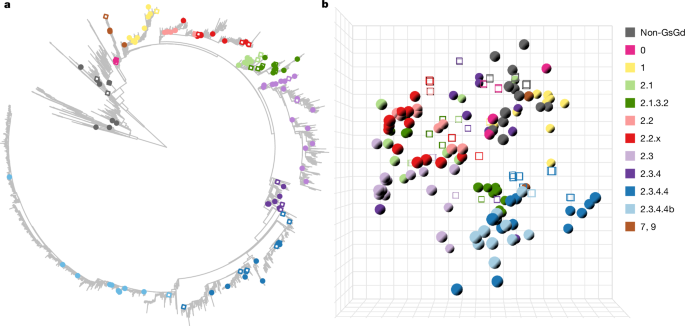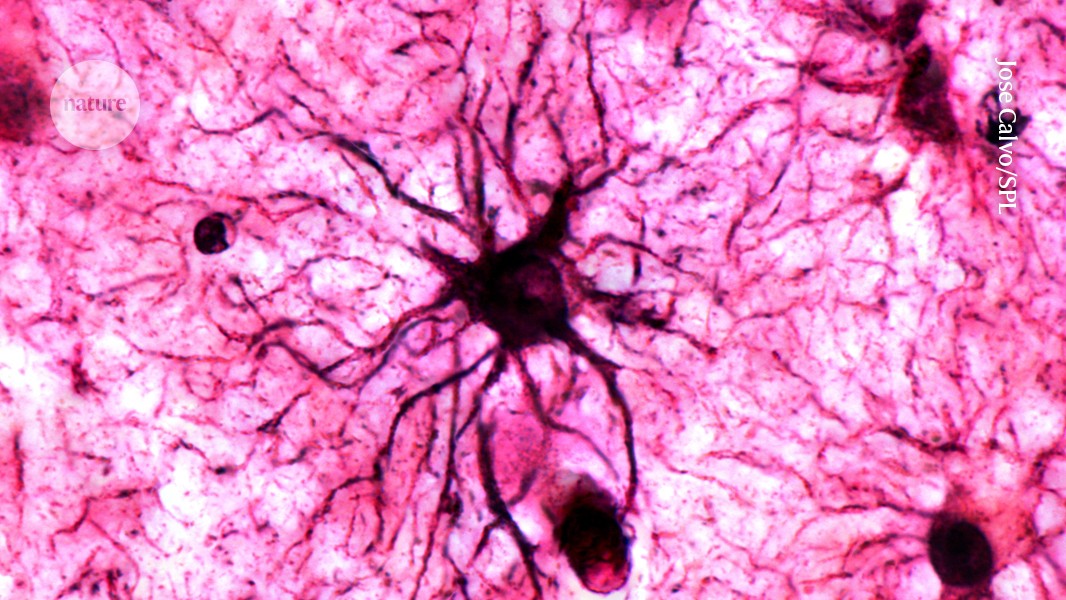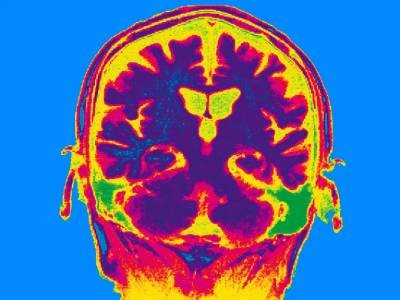A type of brain cell called astrocytes play a crucial role in stabilizing memories in the brain.Credit: Jose Calvo/SPL
Why are we able to remember emotional events so well? According to a study published today in Nature1, a type of cell in the brain called an astrocyte is a key player in stabilizing memories for long-term recall.
Astrocytes were thought to simply support neurons in creating the physical traces of memories in the brain, but the study found that they have a much more active role — and can even be directly triggered by repeated emotional experiences. The researchers behind the finding suggest that the cells could be a fresh target for treating memory conditions such as those associated with post-traumatic stress disorder and Alzheimer’s disease.
“We provide an answer to the question of how a specific memory is stored for the long term,” says study co-author Jun Nagai, a neuroscientist at RIKEN Center for Brain Science in Wako, Japan. By studying astrocytes, Nagai said, the study identifies how the brain selectively filters important memories at the cellular level.
Stable memories
Nagai and his colleagues focused on the question of memory stabilization: how a short-term memory becomes more permanent in the brain. Previous research had found physical traces of memories in neuronal networks in brain regions such as the hippocampus and amygdala2. But it was unclear how these ‘engrams’ were stored in the brain as lasting memories after repeated exposure to the same stimulus.
To dig deeper, the researchers developed a method for measuring activation patterns in astrocytes across a whole brain of a mouse as it completes a memory task. They measured the upregulation of a gene called Fos — an early marker of cell activity that is associated with the physical traces of memories in the brain3.
In a well-established fear-conditioning memory task, mice learnt to associate a certain cage with unpleasant shocks to their feet while the researchers tracked the level of Fos in their brains. Days later, the animals would re-enter the cage and recall the unpleasant sensation. The researchers observed strong Fos upregulation in astrocytes in the animals’ amygdalas and other brain regions when mice re-entered the cage, but not during the initial learning phase, suggesting that astrocyte activity was more important for recalling past events than creating new memories.
“The surprise was that astrocytes did not respond to the fear experience the first time, only the second time,” says Nagai.
Brain stimulation leads to long-lasting improvements in memory
First Appeared on
Source link














